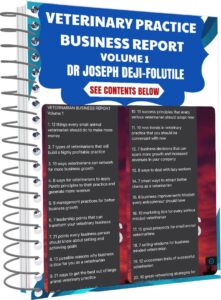🔺21 functions of an effective catfish farm manager
1. **Pond Management:** Oversee the proper preparation, maintenance, and stocking of catfish ponds to ensure optimal growth conditions.
Read also: 12 consequences of using contaminated water in your catfish farm
2. **Water Quality Control:** Monitor and maintain suitable water quality parameters, including oxygen levels, temperature, and pH, for the well-being of catfish.
3. **Feeding Program:** Develop and implement a nutritionally balanced feeding program tailored to different growth stages, promoting efficient feed conversion.
4. **Health Monitoring:** Regularly inspect catfish for signs of disease and implement preventive measures such as vaccinations and proper biosecurity protocols.
 Learn More
Learn More5. **Breeding Management:** Implement and oversee catfish breeding programs, optimizing reproduction rates and genetic traits.
6. **Record Keeping:** Maintain detailed records of production data, water quality parameters, and health observations for analysis and decision-making.
7. **Staff Training and Supervision:** Train and supervise farm staff to ensure they follow proper procedures and maintain high standards of aquaculture practices.
8. **Harvest Planning:** Plan and execute harvest operations efficiently, considering market demand and fish size.
9. **Facility Maintenance:** Regularly inspect and maintain catfish ponds, aeration systems, and other equipment to ensure proper functioning.
10. **Budgeting and Financial Management:** Develop and manage budgets, control expenses, and analyze financial performance for profitability.

11. **Market Analysis:** Stay informed about market trends, pricing, and demand for catfish products to make informed business decisions.
12. **Risk Management:** Identify and mitigate potential risks, such as disease outbreaks, market fluctuations, or adverse weather conditions.
13. **Environmental Compliance:** Ensure compliance with environmental regulations related to water discharge and waste management.
14. **Innovation and Technology Adoption:** Incorporate modern technologies such as automated feeding systems and monitoring devices to enhance farm efficiency.
15. **Crisis Response:** Develop contingency plans for emergencies such as disease outbreaks or extreme weather events.
16. **Employee Safety:** Prioritize and enforce safety measures to protect both catfish and farm staff.
17. **Supply Chain Management:** Coordinate with suppliers for fish feed, medications, and equipment to maintain a smooth supply chain.
18. **Customer Relations:** Build and maintain positive relationships with buyers, distributors, and other stakeholders in the catfish industry.
19. **Research and Development:** Stay updated on the latest advancements in catfish farming practices to continuously improve operations.
Read also: 11 success principles for every catfish farmer
20. **Sustainability Initiatives:** Implement sustainable practices, such as responsible water use and waste management, to minimize environmental impact.
21. **Quality Control:** Establish and maintain high standards for catfish quality, ensuring products meet or exceed market expectations.
🧩CREATED BY DR JOSEPH DEJI-FOLUTILE
For more information and updates join our WhatsApp group HERE
Like our page on Facebook HERE











